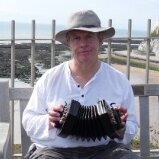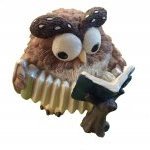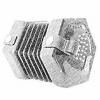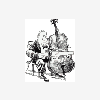
Mikefule
Members-
Posts
1,116 -
Joined
-
Last visited
Contact Methods
-
Website URL
http://
-
ICQ
0
Profile Information
-
Gender
Male
-
Interests
Morris dancer, motorcyclist, bicyclist, dinghy sailor.
-
Location
Lincolnshire, UK
Recent Profile Visitors
3,802 profile views
Mikefule's Achievements

Heavyweight Boxer (5/6)
-
I think of the concertina as a transposing instrument. If I pick up my CG and play a tune in C, and then I pick up my GD and play the same tune with the same fingering, I am now playing in G. As I am a Morris dancer, and most modern Morris music is played on DG melodeons, I play mainly a GD Anglo. I think in GD, even if the box I am playing today is in CG. Of course, I can work out the note names on a CG, or on my old Bb/F, or on a friend's DA, but as I do not sight read, there is no need to. So if you are not going to be sight reading, you can simply learn tunes by reference to a book for CG instruments, but accept that you will be playing in GD. Other approaches are possible, of course. However, the Anglo is optimised for playing by ear and memory, limiting yourself to a small selection of related keys.
-
Advice on getting a "second" concertina
Mikefule replied to Ming Cheng's topic in General Concertina Discussion
I'll second Marcus for quality and service. I had a new "Deluxe" GD many years ago and it was a perfectly good box, although a little on the heavy side. This year, I bought a CG Traveller. The quality and workmanship has improved in the intervening years, and the service remains friendly, and excellent. -
The chord symbol will tell you which notes will "fit". So, for example, the chord symbol C means that any of the notes C, E, or G, in any combination, will support the melody. That does not mean you have to play any, or all of them. A simple steady accompaniment is the "oom pah". The root note as bass, followed by the top two notes. So play C, then play EG. (In waltzes, the equivalent is either "Oom pah pah" or "Oom (gap) pah".) However, if you play oom pah at the time, it can get repetitive, and there will be occasional phrases where it won't work at all. Other options include single notes, pairs of notes, and runs of notes. You also need to be aware that other harmonies may work as well or better. The note G in the melody can harmonise with the chords: C major (CEG) G major (GBD) E minor (EGB) And also with A7 and Am7 Which is best will depend on the key, the genre, the place in the tune, and taste. As a general rule, start off by keeping it simple and not too crowded. Leave daylight between the notes. Too many notes too close together at the same time can sound muddy. As you expand your repertoire of tunes, you will gradually extend your palette of accompaniment options. You can then revisit the tunes you learned earlier and apply your new techniques to get different effects. Also, it is perfectly legitimate to play melody only. Surprisingly, although this is "simpler" (less complex) it can be more difficult to make it sound musical. Without the interplay of melody and accompaniment to add interest, you need to work on dynamics, volume, timing, attack, fingering options and so on. There are a few wrong ways, and many right ways to play. However
-
Recommendations for Beginner Instrument
Mikefule replied to Patty H's topic in Teaching and Learning
If you are set on playing Anglo, then everything you can play on a 20 button instrument can be transferred to a 30 or more button instrument with the same fingering. The converse does not apply. The 20 button Anglo is very versatile. It is often summarily dismissed by people who assume "more is always better", but many thousands were made and sold and plenty of us enjoy playing them. However, it is true that a 30 button is even more versatile than a 20. One benefit of the 20 button Anglo is that it forces you to understand the logic of the Anglo layout and work on your fingering without taking the easy short cuts that become possible with more buttons. My playing improved enormously after I bought my first 20 button instrument. If you are already a keen and experienced musician, you may find that the English or duet work better for you. The English is fully chromatic, and has a consistent/logical layout. It can do pretty much everything that the violin or flute can do. The duet can do pretty much everything that a small (short keyboard) piano can do. However, the Anglo has a character all of its own. "Logic" told me to buy an English, but I ended up with Anglo after trying both systems. Maybe my background in harmonica and melodeon were factors. I would say that if you are already a keen musician, you would be better off with a good quality instrument with limitations of range, rather than an instrument with more buttons but less quality. If you cannot yet justify going for a good quality 30+ button, then get a good quality 20. If you take to it, it will not be the last concertina you ever buy. Far better to have one you enjoy playing and which encourages you to upgrade, than one that you don't enjoy playing which encourages you to give up. -
Push pull change while on the same button
Mikefule replied to latzenpratz's topic in Teaching and Learning
You get a crisper sound, with cleaner attack at the start of the note if you take your finger off and put it back on between notes on the same button. If you just hold the button down and reverse the bellows direction, you get no "daylight between the notes" and the sound is less crisp. I recommend learning to do it by taking the finger off and putting it back on. It takes a little more practice, and a little more discipline, but 9 times out of 10 it will sound cleaner and better. Thing is, if you can do it the hard way, there is nothing to stop you choosing to do it the easy way to create a particular effect. If you can only do it the easy way, then you have no choice. -
Store the instrument in a readily accessible place. If it's not easy to get it out, you will be tempted not to bother. Practise every day for a few minutes. 10 minutes a day is better than 70 minutes once a week. Accept that initial progress will be slow and a little tedious. It will far easier when you have 3 or 4 tunes you can play. Find a structure for your practice that works for you. I start off with a familiar tune or two, then try something a bit more challenging that you're working on, then finish on a high with familiar tunes. Spend a little time on scales. It doesn't have to be tedious, but it will help you with tunes. Ditto with arpeggios. Tunes tend to be made up largely of parts of scales and parts of arpeggios. Start off with easy tunes. Walk before you try to run. Try the foothills before you try the mountain. Aim to play well, rather than just getting through the tune without mistakes. Lots of repetition will smooth out the tricky bits. Don't make yourself miserable by comparing yourself with others. Enjoy playing what you can as well as you can.
-
Playing in octaves on Anglo? There are many approaches. I will assume a CG Anglo. Change the notes accordingly if you are on another tuning such as GD. As a starting point, play a simple 3 note phrase in parallel octaves: CDE CDE repeated. Then try CDE EDC CDE EDC etc. Then try CDEF CDEF etc. Build up in the obvious way. In C, you will find that you can work up to CDEF GAAG FEDC without problems. The next note is a problem: both B notes are on the right hand. There are two ways to get round this. 1) The left hand drops down an octave for the B and C, or 2) Cross to the G row. Crossing the rows is an important skill, so I suggest you work on this: CDEF on the C row GABC on the G row Once you can do this, you can extend up and down the scale, building your confidence incrementally by adding one rung of the ladder at a time. The next question is how you use this skill. There are several approaches including: 1) Playing everything in parallel octaves, note for note. This can be monotonous. 2) Only playing the lower octave on the down beats. 3) Doing 2 above most of the time, but with occasional bursts of 1 above. I found that this approach of consolidating a short part of the scale, then adding one more rung every so often worked for me.
-
If you are playing in the major key in one of the 2 main keys of the instrument, the tune will usually be mainly on the push. If you are playing in a different key (for example, D major on a CG box, then there may be a greater proportion of pull notes. However, playing in a third or fourth major key on an Anglo (D or A instead of C or G, for example) is advanced stuff. However, many traditional tunes are not in the major key. They might look like they are when you see them written down, and they have all the notes of (say) C major. However, you will you notice that the home note is on the pull (D on a CG box). If the home note (tonic) is on the pull, then the tune will be mainly on the pull. You will start to recognise these tunes with time and practice. You will also find that the air button becomes less of an issue the more that you play. A beginner tends to play slowly, so each note is longer and requires more air. A beginner tends to hold onto a note while they are working out what note comes next. That requires more air. A beginner tends to squeeze and hold the buttons down, whereas a more experienced player "taps" them percussively for the shorter notes. A beginner generally tends to leave less "daylight" between the notes. A beginner is often a bit frightened of using the air button, and takes big clumsy "gulps" of air which disturb the rhythm of the tune. A beginner tends to stick to a small number of familiar fingering patterns. As you gain experience, you will find: You play a little bit faster, so you use less air. You know what note's coming next and you flow into it smoothly without having to hold and think. You tend to play with a lighter touch, tapping the buttons, except on the long notes. You find there are gaps between the notes. The notes make a picket fence rather than a wall. You start tapping the air button at several convenient moments in the tune, taking small breaths to adjust the volume of air in the bellows, rather than filling or emptying them in one big movement. You find that there are several possible ways to play a run of notes, and you can choose options which help you to manage the air in the bellows.
-
How did you find your way to concertina?
Mikefule replied to Capitanya's topic in General Concertina Discussion
I was a serial failed musician. Aged 17-18 (around 1980), I bought a simple diatonic harmonica and got good enough to play a few jigs and reels at the local folk club. I then bought a chromatic harmonica but made no progress with it. I then bought a Koch tuned chromatic harmonica, which is nearer to a standard diatonic in layout, but never really took to it. I then tried penny whistle but only briefly. Ditto with the fife. I then bought my first 2 row melodeon. I got good enough to knock out a few Morris tunes, but never really enjoyed it. I have since owned 2 other 2 row melodeons and a 1 row that I seldom played. I no longer own any melodeons. I also had piano lessons for a while. And trumpet lessons. And drum lessons. And guitar lessons. I even bought a glockenspiel, inspired by a short-lived craze of listening to MJQ and Milt Jackson. (I couldn't afford a proper vibraphone.) By this stage, I was in my mid 40s and had still not found an instrument I really enjoyed. I was more "playing at music" than "playing music". I knew about the concertina: I had heard them played a few times, but in most cases, I had not been particularly impressed. But one day, bored, I started Googling concertinas, trying to understand the difference between Anglo and English. Something drew me in. Logically, the English was the instrument for me: fully chromatic, and laid out in a consistent and logical pattern. I was tired of "transposing instruments" (harmonica, melodeon, trumpet) where there is an extra barrier to reading the dots. I borrowed an English concertina and practised every day for about a month. I learned to lay a simple scale, but couldn't coordinate sufficiently to play a tune. Then, by coincidence, I heard an Anglo played by an expert (Keith Kendrick) one night, and an English played by an expert (Dave Ledsam) the next night. Although both were wonderful, I knew the Anglo was the sound I was looking for. Based on advice in this forum, I ordered a Rochelle. Coincidentally, I bought it via Dave Ledsam's music shop, and booked lessons with Keith Kendrick. I made enough progress in a few weeks to allow Keith to persuade me to upgrade to a Marcus. For logistical reasons, I had to stop lessons with Keith, but I then managed to persuade an old acquaintance, Alan Davies, against his better judgement, to give me lessons. I had monthly lessons for something like 10 years. I now own 5 Anglos and practise for at least a few minutes almost every day and love it. -
How many concertinas have you owned/tried?
Mikefule replied to LR71's topic in General Concertina Discussion
I have owned: Rochelle 30 button C/G. Sold. A good basic beginner's box. Marcus 30 b G/D "Deluxe". Sold. A nicely made box, a bit heavy, and the action was rather clicky. Jeffries 38(?) button B flat/F. Sold. A beautiful box, smooth to play and a lovely sound. I sometimes regret selling it, but I had no need for B flat/F. I own: Dipper 30 b G/D with amboyna ends. My pride and joy. Lachenal 20 b C/G, 5 fold bellows. One of the nicest Lachenal 20s I've played. Lachenal 30 b C/G, baritone, 5 fold bellows. Lovely tone on the left hand, slightly less so on the right. I play it occasionally. Lachenal 20 b C/G piccolo. An impulse buy. Very high pitched, and the left hand sometimes overwhelms the right, so it encourages a sparse (and therefore carefully selected) accompaniment. I enjoy playing it from time to time. Marcus 21 b Traveller, C/G. You can find my review of this elsewhere in the forum. A beautifully made box, although not subtle. I have played: Every box I have had chance to play including: 5 other 20 button Lachenal C/G before choosing the one I bought. At least 2 x Lachenal 20 b G/D Briefly, a Lachenal 20 b D/A Several AC Normans, mainly 30 b C/G or G/D Another Rochelle, which I played recently, long after I sold my own. Various 30 b Lachenals. 2 or possibly 3 Connors. They were nicely made but I personally did not enjoy playing them. -
I don't play English, but I know a man who does. In fact, I know several. They use the bellows like a violin bow: sometimes long strokes, sometimes short, sometimes "percussively". The piano accordion gets similar criticism. One way of playing it is long bellows strokes, maybe one stroke per phrase of music, which can make it either mellow and relaxing, or bland and unexciting, depending on your point of view. However, a good musician knows when to use one technique and when to use another. I have known piano accordionists who could play for the Morris with more "punch" and "lift" than most melodeonists. Conversely, the Anglo is sometimes stereotyped as a push pull instrument that is "best for dance music" but it is possible to play whole scales and phrases (sometimes whole tunes) in one bellows direction.
-
Dancing whilst playing!
Mikefule replied to Kathryn Wheeler's topic in General Concertina Discussion
I play Anglo in a harmonic style with lots of bass work with my left little finger (pinkie). I have never had any substantial success playing standing up, let alone dancing. A former member of our Morris side used to play Anglo as a single line of melody and was therefore able to support the ends of the instruments more easily. He would occasionally dance a jig whilst playing, and would very occasionally join in the set. Many years ago, as a show dance at the Thaxted annual meeting, my side put up a complete set of dancing musicians (mainly melodeon, one Anglo) and had a non musician standing "to attention" in the position where the musician would normally stand. My own claim to fame was that I used to dance a Morris jig, including all the hand movements, whilst playing a small harmonica (mouth organ). I haven't done it for a few years now.- 16 replies
-
- 1
-

-
Interpretation of Concertina Descriptions
Mikefule replied to cupkat's topic in General Concertina Discussion
Option 1: 20 Keys (buttons), Bone Buttons, Rosewood Ends, Steel Reeds, 6 Fold bellows, Concert Pitch Option2: 20 Keys, 5 Fold bellows, Wood Ends, Bone Buttons, concert pitch, refurbished, excellent condition. Rosewood ends should be specifically rosewood. Wood ends may or may not be rosewood, depending on the seller's level of knowledge. Bone buttons are common on Lachenals. 5 fold bellows is the basic spec. 6 fold bellows in the same condition would make the instrument easier to play. Steel reeds are more durable but less mellow than brass. (Others may have different views on this.) Concert Pitch is important. An instrument that has not been retuned to modern concert pitch will be out of tune with modern instruments, but in tune with itself. I have a 20 button Lachenal and have very much enjoyed playing it. It has a charming simplicity to it: 5 fold bellows, bone buttons, and a clickity click action that makes me feel I am playing something with character. However, I play it less often these days as I now have a brand new 21b Marcus Traveller in the same keys. -
Hi, all, I keep my concertinas in their cases in the part of the house which has the most stable temperature and humidity. However, I am noticing some whiteness on the outside of the leather parts of the bellows. It looks like it might be something like a salt leaching out of the glue, or it may be a slight touch of mildew? Also, the folds are gathering some dust. What do you use to clean the outside of your bellows, please?
-
A big percentage of tunes in a major key can be played on one row. Indeed, if you are versatile about starting a tune on the left hand octave, the vast majority of tunes in the major key, and many in the associated modes, can be played on a single row. Another technique I used to use on harmonica (which is equivalent to a single row of an Anglo) was to transpose a single phrase up or down an octave to make it fit. My question is "why?" If you play a single line of melody, you can play it more smoothly, often more quickly, and with easier fingering, with a couple of simple across the row techniques. Just one example that I use regularly: on a CG box, playing in C, I will often use the B (push, 2nd button right hand G row) in preference to the B (pull, 5th button, right hand C row) in a run of notes. If you play in a harmonic style, then crossing rows opens up richer accompaniment options. I can understand it as an exercise to develop technique, or even as an intellectual challenge, but I can see no musical advantage in playing along the row when there is a better option crossing the row.







